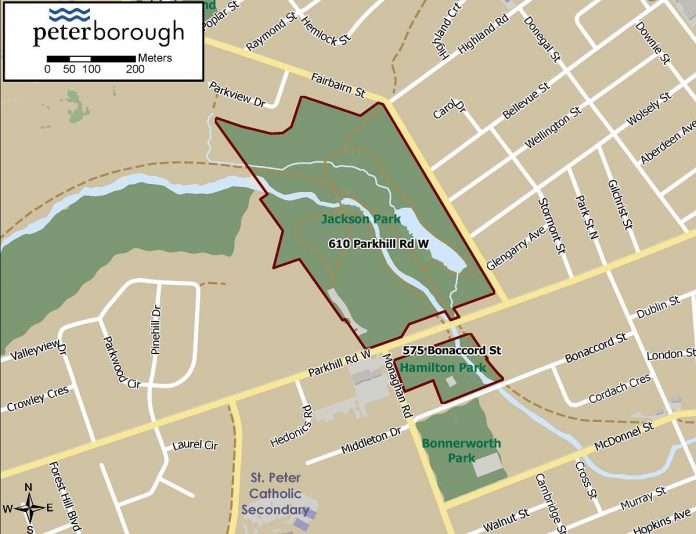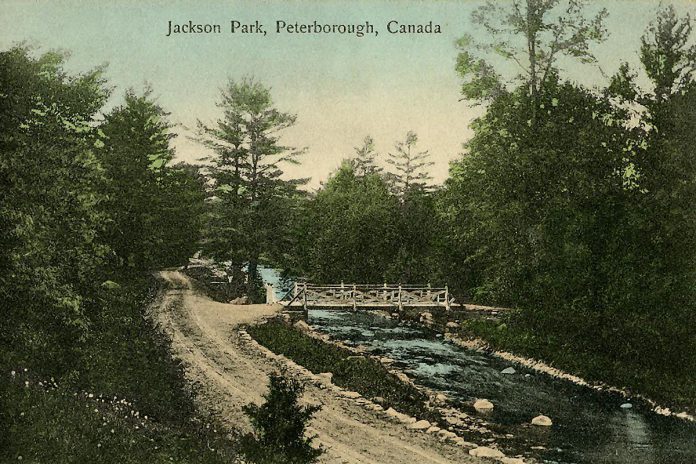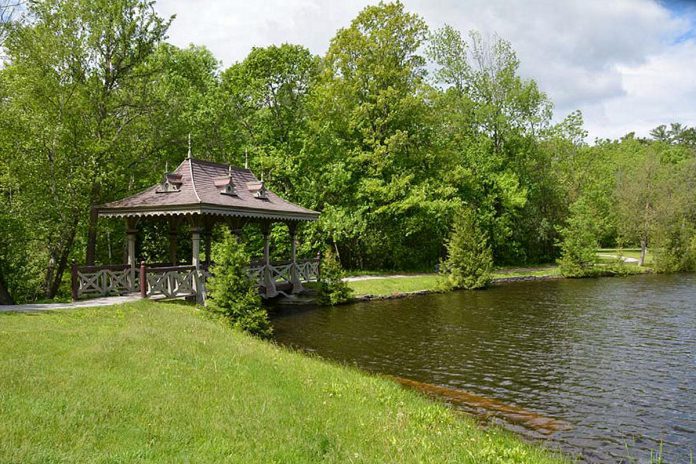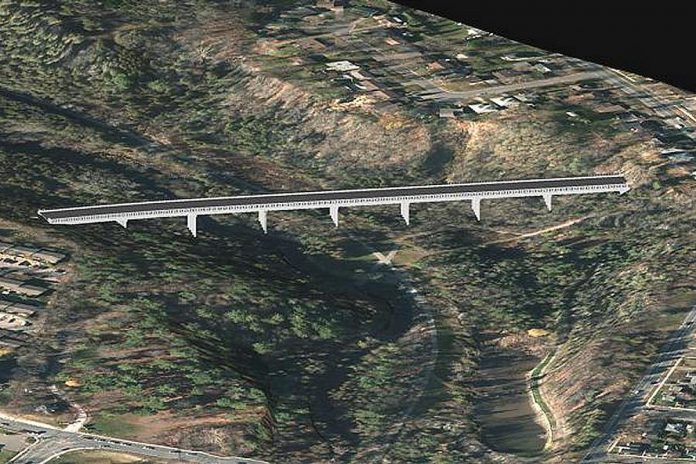
Peterborough city council has endorsed designating Jackson Park as a “cultural heritage landscape” under the Ontario Heritage Act — eight years after the city had proposed building a four-lane bridge through the park.
Councillors voted unanimously to support the designation at a virtual general committee meeting on Monday night (December 6). The designation would include both Jackson Park at 610 Parkhill Road and the adjacent Hamilton Park at 575 Bonaccord Street.
“A walk through Jackson Park on a stressful day is definitely a holiday,” said Councillor Stephen Wright, with Councillor Kemi Akapo referring to it as Peterborough’s “own Central Park.”
In June 2019, city council requested city staff provide a report on designating the park as a cultural heritage landscape. In September 2019, the Peterborough Architectural Conservation Advisory
Committee (PACAC) produced a 59-page report recommending that both Jackson Park and Hamilton Park be designated.
“The two parks are physically connected by the trails which run under the Parkhill Road bridge and by Jackson Creek which courses through both parcels,” the PACAC report reads. “Although Hamilton Park was developed later than Jackson Park and as a different kind of park, it is integrated into the larger landscape through natural and built features, both historically and in its present usage where it now acts as a southern gateway to Jackson Park. The two parks effectively now function as a single green space and can be considered as connected parts of one unified landscape.”
Before the designation under the Ontario Heritage Act can be codified in a municipal by-law, council’s intention to designate the park must be advertised and a notice of intention must be served to the owners of the properties — which, along with the City of Peterborough, include Otonabee Region Conservation Authority and private landowners.

The pagoda bridge within Jackson Park was already designated as a heritage structure under the Ontario Heritage Act in 1987.
The staff report presented to council at the December 6th general committee meeting describes the heritage significance of Jackson Park:
“Jackson Park has been in continuous use as a park since its creation at the end of the 19th century and is a landmark landscape with considerable significance to the local community,” the report states. “The park is an excellent, representative example of naturalistic urban park design of the late 19th century, designed to allow visitors to experience nature within the context of an urban, industrial setting.”
“Designed by John Belcher, the noted 19th-century Peterborough architect [who designed Market Hall], the park displays a high degree of craftsmanship in its overall planning and layout, demonstrating a well-developed understanding of the design elements of the 19th-century naturalistic urban park,” the report continues.
“Jackson Park has direct associations with several themes, people, organizations and activities which are important to the history of the community including the development of park lands in Peterborough, recreational activities of Peterborough residents, the role of parks and green spaces as part of community improvement, and the charitable and social goals of Charlotte Nicholls.”
“Through its physical topography and development as parkland, Jackson Park was an important part of defining the late 19th-century layout and settlement patterns of the surrounding roads and neighbourhoods. The park is physically and historically linked to the larger landscape of the oldest sections of the city as part of the Jackson Creek watercourse which flows from the park and through downtown Peterborough where it is a defining feature of the landscape.”


“It is also historically linked to its immediate surroundings as part of the original Dixon property and to Dixon House, the designated homestead of William Dixon one of the first ‘Colony Settlers’ of 1818,” the report adds.
The report also describes why Hamilton Park is being included in the designation:
“Hamilton Park was created in 1944 on land donated by former Mayor James Hamilton,” the report states. “The park was not intended as a naturalistic park although wooded areas remained; rather,
its creation recognized the creek’s use as a popular swimming destination. The creek bed was widened, its banks hardened, and a weir installed to create a large swimming area.”
“The work created a contiguous park space and formally extended the recreation facilities of Jackson Park south of Parkhill Road,” the report continues. “Its inclusion in the designation recognizes the evolution of Jackson Park as a large tract of programmed park land within which natural features are altered to create recreational amenities.”
Council’s decision to proceed with the heritage decision comes eight years after the City of Peterborough’s doomed Parkway Corridor project, which proposed a four-lane bridge that would span Jackson Park.
The proposal to build a multi-lane bridge over the green space, which was met with stiff opposition from local environmental groups, was killed after the Ontario Minister of Environment and Climate Change required the city to complete a full environmental assessment, which former Peterborough mayor Daryl Bennett called “a sad day for progress in the city” at the time.



























